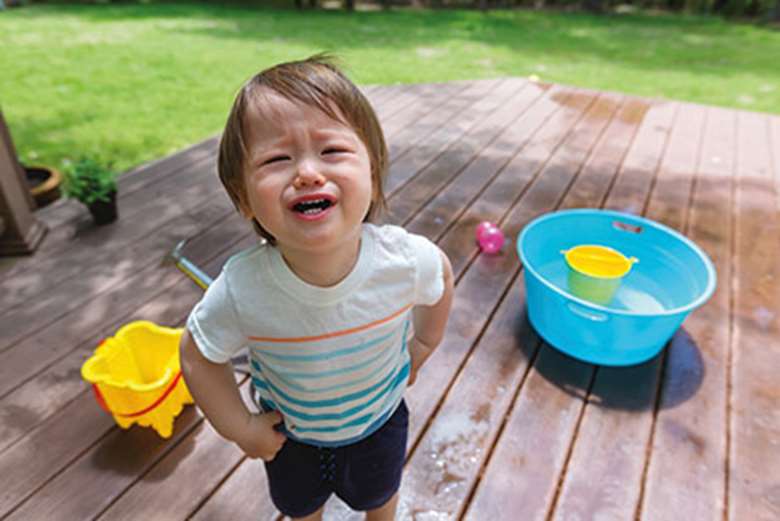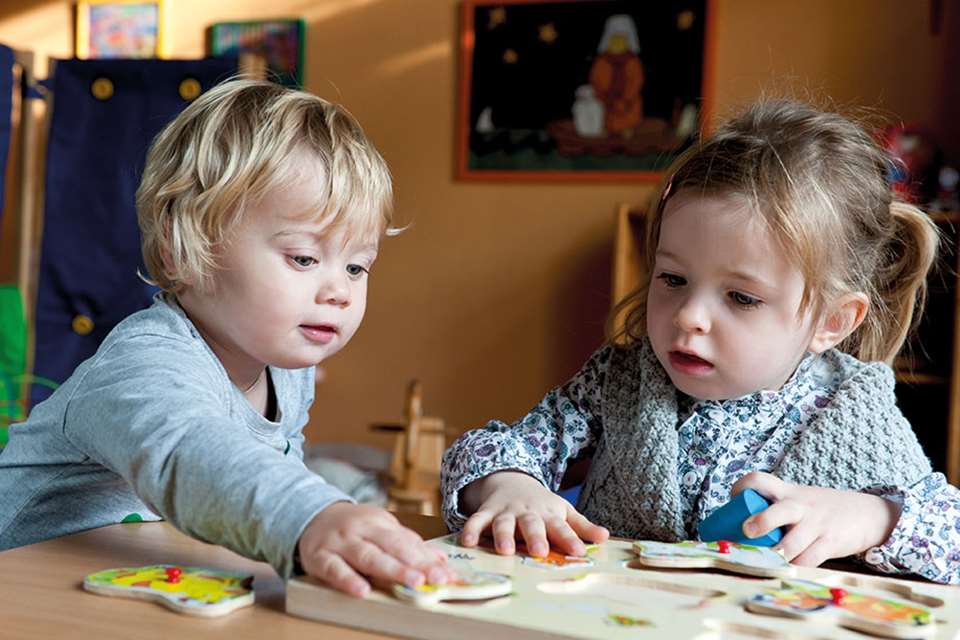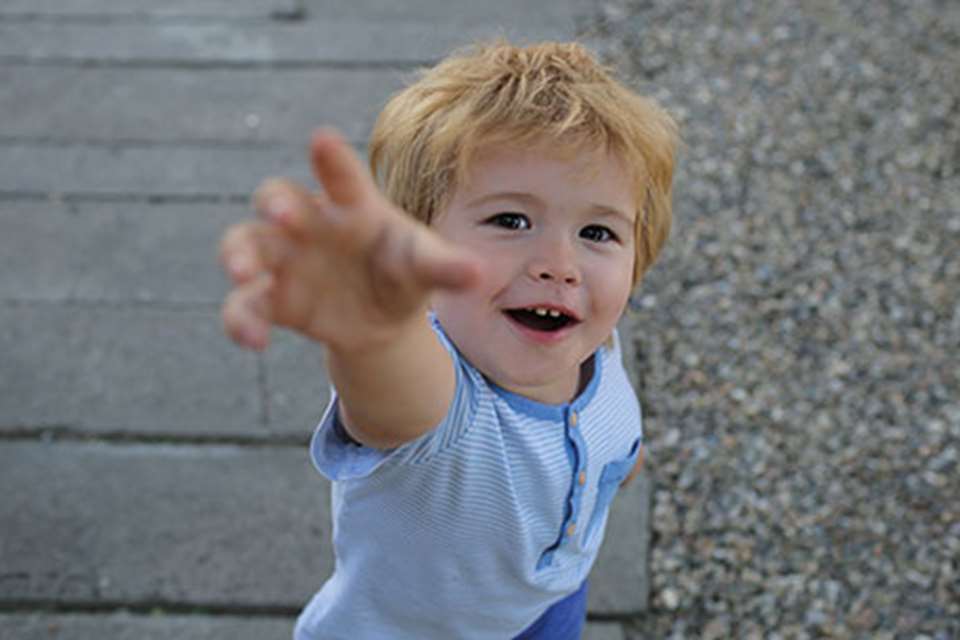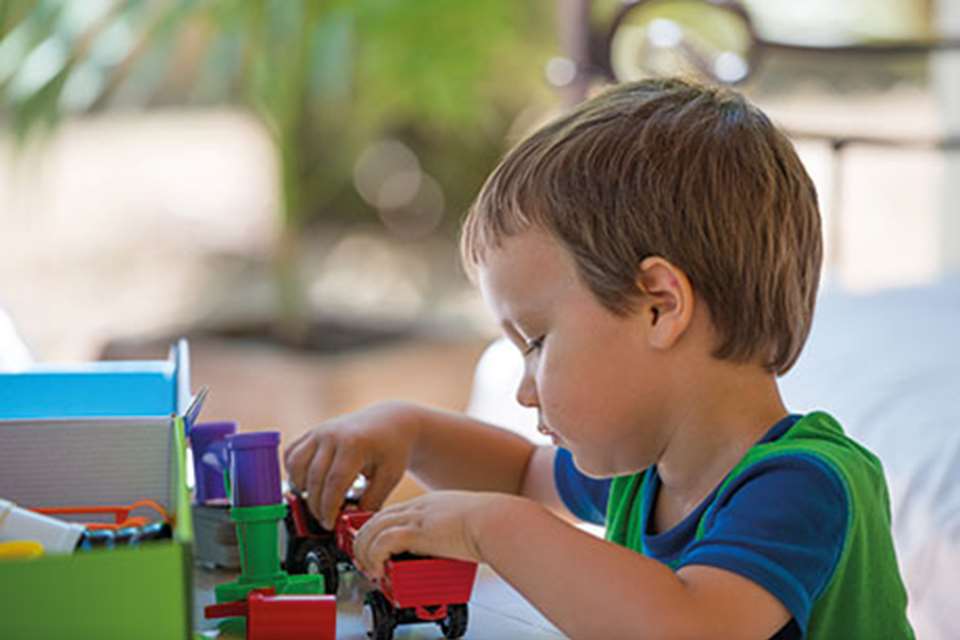Behaviour: Distress - Comfort zone
Monday, March 4, 2019
Understanding and responding to young children’s distress is vital to their future mental health, explains Debbie Brace

Download the PDF of this article
Distress and comfort are part and parcel of everyday interactions in early years settings, but the way young children are seen and understood to communicate distress, and the way adults are observed to respond, varies enormously.
This is important because these interactions are known to have a profound effect on emotional development. An upset child wants and needs us to ‘receive them’.
PROCESS OF RECEIVING
The process of receiving a young child’s distress sounds straightforward but is actually a complex psychological exchange that can be overwhelming for parents and practitioners alike.
‘Receiving’ a child’s unhappiness means noticing and allowing difficult feelings to be expressed, thinking about them, and trying to make sense of them before giving them back to the child in a more emotionally manageable form. In a busy early years setting, receiving young children’s distress can be a noisy, messy, uncomfortable and draining process that without appropriate training and support is likely to be avoided.
As a trainer for the London borough of Hounslow’s Let’s Talk Together programme, which aims to develop the quality of adult-child interaction and improve children’s communication skills, I became increasingly aware of practitioners’ understandable tendency to avoid difficult interactions that involved ‘receiving’ children’s distress.
‘They are settling’ was a phrase I often heard to describe children looking anxious, not taking part in activities or crying out for parents. That is not to say practitioners left children alone, rather that they worked very hard to distract them from being upset.
Since studying for a Master’s degree in ‘work with infants and the early years using a psychoanalytic and observational approach’ at the Tavistock Clinic, I have tried to promote an open and honest way of noticing and commenting on emotional communications.
The approach, using the phrases ‘Watch, Wait and Listen’ and ‘Say What You See’, helps practitioners to slow down and use words to acknowledge children’s feelings. This way of working is having a big impact on settings involved in the Let’s Talk Together programme. Before the training, practitioners said they felt uncomfortable talking about and naming feelings of distress – for example, if a child was clearly missing their parent – for fear of ‘making it worse’.
IN PRACTICE
Whimpering, Sonita (aged three) approaches her key person, Kate, who stretches out an arm to her, looks enquiringly and says, ‘Sonita, I can see you are upset.’ She then pauses as Sonita leans into her arm and explains she has a belly ache. ‘You’ve got a belly ache – your tummy is hurting today. Oh dear,’ says Kate, then goes on to add, ‘I wonder if you might be missing mummy?’ Sonita nods and begins to sob.
‘You are missing mummy. Would you like a cuddle while you think about mummy?’ asks Kate. Sonita nods and climbs into Kate’s lap. Kate holds her close and rubs her back gently then suggests they find the photo of her mummy to look at.
Kate carries Sonita over to her peg to find the photo and waits quietly, her hand on Sonita’s back, while Sonita holds on to the peg, still sobbing. After a few moments, Sonita climbs back on Kate’s knee. Kate suggests they find a book to share with some friends. After a few moments pause, Sonita nods.
Containment
This type of attuned exchange is described as ‘containment’ by psychoanalyst Wilfred Bion (1962) – a helpful word as it suggests something needing to be held to keep it from spilling out everywhere. When a child’s unmanageable feelings begin to overflow, the repeated process of ‘containment’ – in which a trusted adult makes an effort to understand the child and think about what they might be feeling – is hugely comforting. In the case study, Kate:
- ‘received’ and named Sonita’s feelings
- acknowledged Sonita’s pain at missing her mummy
- gave Sonita time to express her feelings
- let Sonita know through verbal and non-verbal responses that it is OK for her to have these difficult feelings and that Kate is able to empathise and help her manage them
- gave Sonita an implicit message that the bad feeling will eventually pass and good feelings will come again – as they enjoy a book together.
When interactive exchanges like this happen repeatedly within a trusting relationship, the child internalises the experience. This means they will learn to notice, express and manage their own difficult feelings in the future. Having a full repertoire of emotions, including distress, ‘received’ by their primary attachment figure (usually the mother or father) is one of the keys to developing good mental health and the development of what psychologists call self-regulatory capacity or resilience.
Suzanne Zeedyk describes this process as building ‘an internal teddy bear’ (2013), because we all know that you can turn to a teddy bear for a comforting cuddle in a time of need. However, not everyone has had the good fortune to grow up in such a trusting relationship, making the role of early years staff in supporting young children’s emotional development all the more important.
AVOIDING DISTRESS
Adults might feel overwhelmed by children who appear unhappy and react by distracting them from it, hurrying or jollying them along, as if a child’s crying and upset reflects a failure in their skills – ‘Don’t cry… don’t upset yourself… There is no need for tears, let’s go and find something exciting to do.’ The script might change, but the message to the children is clear: distress is something to be avoided or kept out of sight.
The adult’s wish to avoid thinking about and responding to the child’s distress is certainly not intentionally unhelpful. Rather it is because it is usually an unconscious defensive mental process; the adult doesn’t realise they are avoiding the child’s feelings.
How we have been responded to as infants and children when we felt frightened will influence the way that we respond to our own children or those we work with. This is an uncomfortable fact and one that organisations such as the Association for Infant Mental Health UK work hard to address by raising awareness of the importance of supporting the earliest relationships between babies and their caregivers to encourage good mental health in later life.
Important research (Elfer and Dearnley 2007) has shown that creating space and time in early years settings for practitioners to talk about the emotional challenges of caring for children is an important step towards becoming better able to receive children’s distressing communications.
If our unconscious responses are helped to become more conscious through being given a reflective space to think, with good supervision and staff meetings, then difficult feelings can be thought about and change in our habitual ways of responding becomes possible.
We know that if a child’s fears or worries are avoided repeatedly, or worse, ignored altogether, they may struggle with self-regulation as they grow up. Children who have been responded to inconsistently with misattuned responses when upset can be confused about how to seek comfort when they are stressed or distressed in future, and will have to find alternative external ways to manage their difficult feelings.
Implications
Where distress hasn’t been ‘received’, a child may display their feelings of vulnerability in anger or cut off from their feelings by being excessively busy – for example, jumping and racing about with endless but mindless activity, talking incessantly so that there is no space for thinking, or engaging in risky or precarious play. Later in life they may resort to alcohol or drugs, comfort eat or play the clown to cut off from the reality of vulnerable feelings.
THIS MATTERS
The positive impact of emotionally connected early interactions on language and mental health outcomes cannot be overstated, and needs to be addressed in early years practice. Practitioners who work in settings where they can talk openly about how they respond to children are better equipped to have emotionally containing interactions with children. A child in distress is not a failure in care. Failing to allow a child to express themselves is.
‘Receiving’ a child’s distress: action points
- Hold whole-staff training about developing connected interactions
- Develop a monthly reflective group meeting specifically to share observations and feelings about the children
- Take photos of the child with the parent at the first visit
- Display photos of the child with their parent (on the peg, on the wall, in a family book or on a jam jar lid)
- Send a photo of the key person home with the child
- ‘Say What You See’ to name difficult feelings
- Use plenty of pauses
- ‘Watch, Wait, Listen’ to help the children process rather than rush through their feelings
- Join the Association for Infant Mental Health (AIMH UK), https://aimh.org.uk
MORE INFORMATION
- Elfer P and Dearnley K (2007) ‘Nurseries and emotional well-being: evaluating an emotionally containing model of professional development’, International Journal of Research and Development, 27 (3), pp267-279
- Winnicott DW (1958) Collected Papers: Through Paediatrics to Psychoanalysis. Tavistock Publications
- Zeedyk S (2013) Sabre Tooth Tigers & Teddy Bears: The connected baby guide to attachment. Suzanne Zeedyk Ltd









